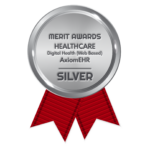Don’t let your patients slip away.
Health care professionals might see their EHR software as just another facet of their day-to-day operations, but certain legacy systems might be costing them more patients than they realize. A recent study by Becker’s Health IT and CIO Report found that doctors spend an average of 43% of their day interacting with their EHR software, and for first-year physicians, this number increases to 66%. When health care professionals are spending more time with software than with patients, it probably comes as no shock to learn that problems are bound to arise.
When a health care professional has a set number of patients they need to see in a day, they also know that each patient equals a large amount of time inputting data into their EHR software. This has been standard industry practice for decades, but it’s costing clinics operational efficiency and negatively impacting quality of care. Deloitte’s annual “Survey of US Physicians” found that seven out of 10 physicians reported a loss of productivity as a result of their EHR software. If EHR software is meant to help doctors, the data reveals the exact opposite. Why is this is the case? The answer is poorly designed and outdated legacy EHR systems.
While health care professionals are reporting lower productivity, it also comes at a cost to the patient. For starters, patients know when they’re receiving sub-par care. And once these patients have a negative encounter with a practice, they won’t hesitate to take their business elsewhere. It has been found that the majority of patients who choose to disengage with a health care facility do so when they feel their provider seems indifferent to their wellbeing. Zocdoc’s most recent Match Made in Medicine analysis listed key factors like poor communication, lack of trust, rushed appointments and constant tardiness as the primary reasons patients stop engaging with their providers.
Several factors might contribute to this “indifferent” attitude, but legacy EHRs are largely at-fault. Providers already know that every patient encounter matters, and they know they need to pay close attention to patient symptoms and concerns. They also understand that a patient’s time is valuable and that staying-on schedule is crucial to their reputation. However, when providers are spending more time with their software than their patients, many of the most important aspects of the patient experience get lost. Instead of giving their patients the time and attention they deserve, they’re burdened with administrative work that is clunky, inefficient and tedious.
A major reason why legacy EHRs eat up so much valuable time is because they fail to update their technology to align to the current needs of integrated health care environment. Even though better and faster technology has become available, most legacy EHRs are still relying on antiquated software from as early as the 1990s. Artificial intelligence can take over a great deal of administration, but most legacy EHRs aren’t advanced enough to support it. Additionally, the lack of customizable options present in most legacy EHRs slows down the process. If a physician needs something as simple as a customized form, they can expect a long turn-around time from developers who need to write the code for the form and it may take months to a simple form completed.
For integrated health care practices that want to spend less time with EHR software and more time with patients, the Axiom platform, powered by HiMS, can provide the solution. With Axiom, software updates are automatically delivered every two weeks with no need for costly upgrades, and users can enjoy a “drag and drop” approach to customization with no added cost. Plus, everything used on an everyday basis is accessible within two clicks. To learn more about how Axiom can help you take back control of your health care practice, contact us today.





